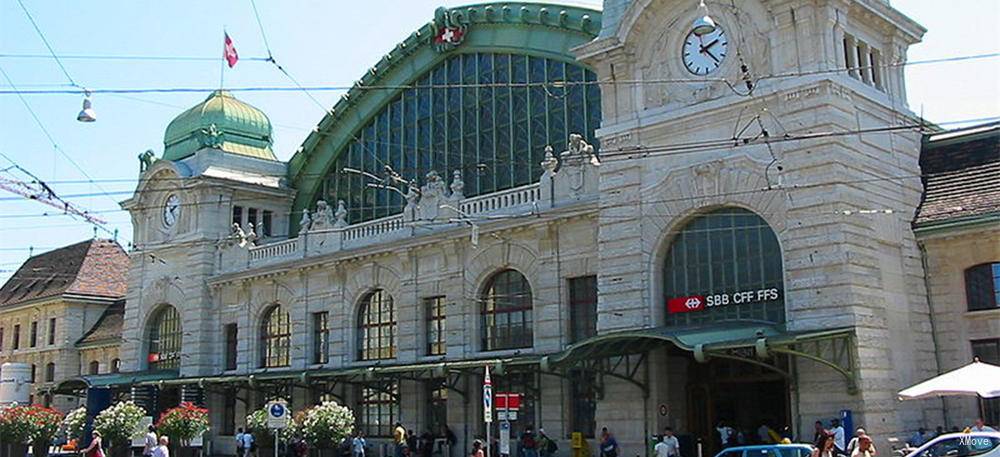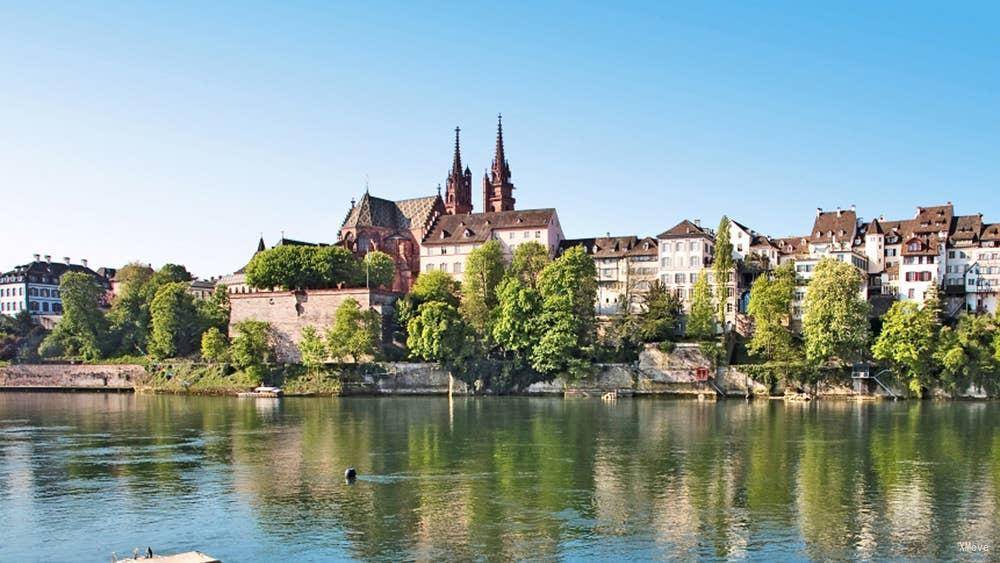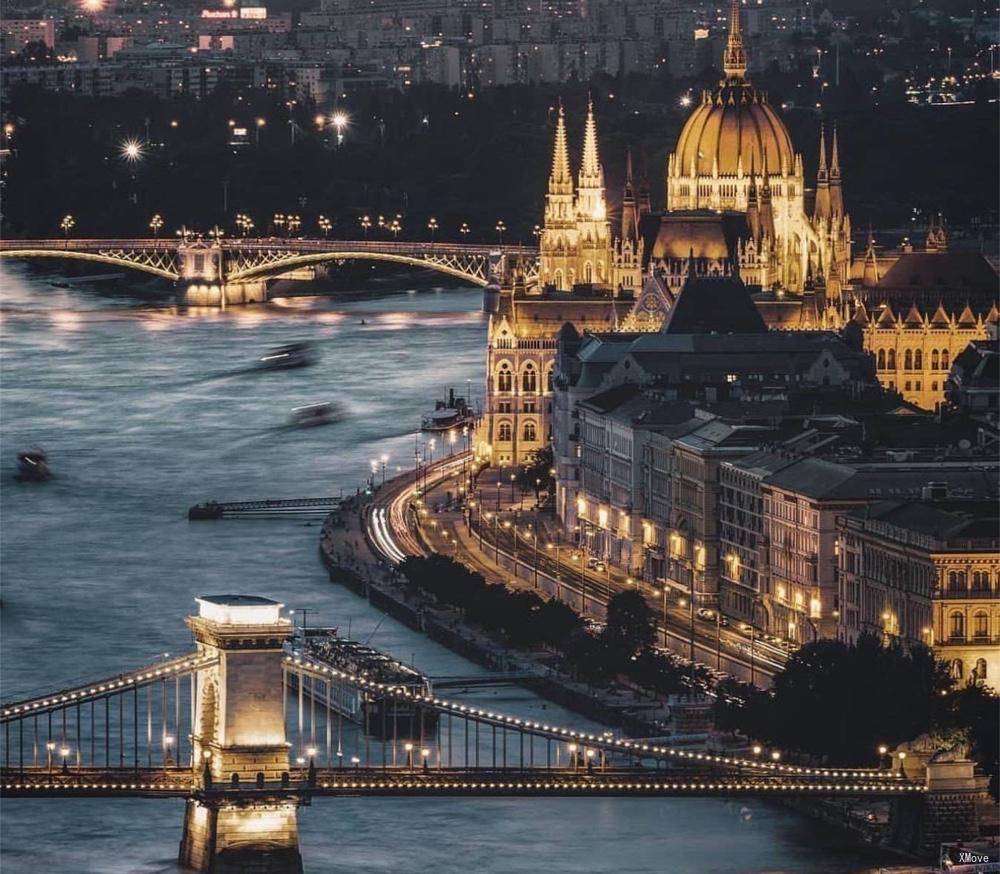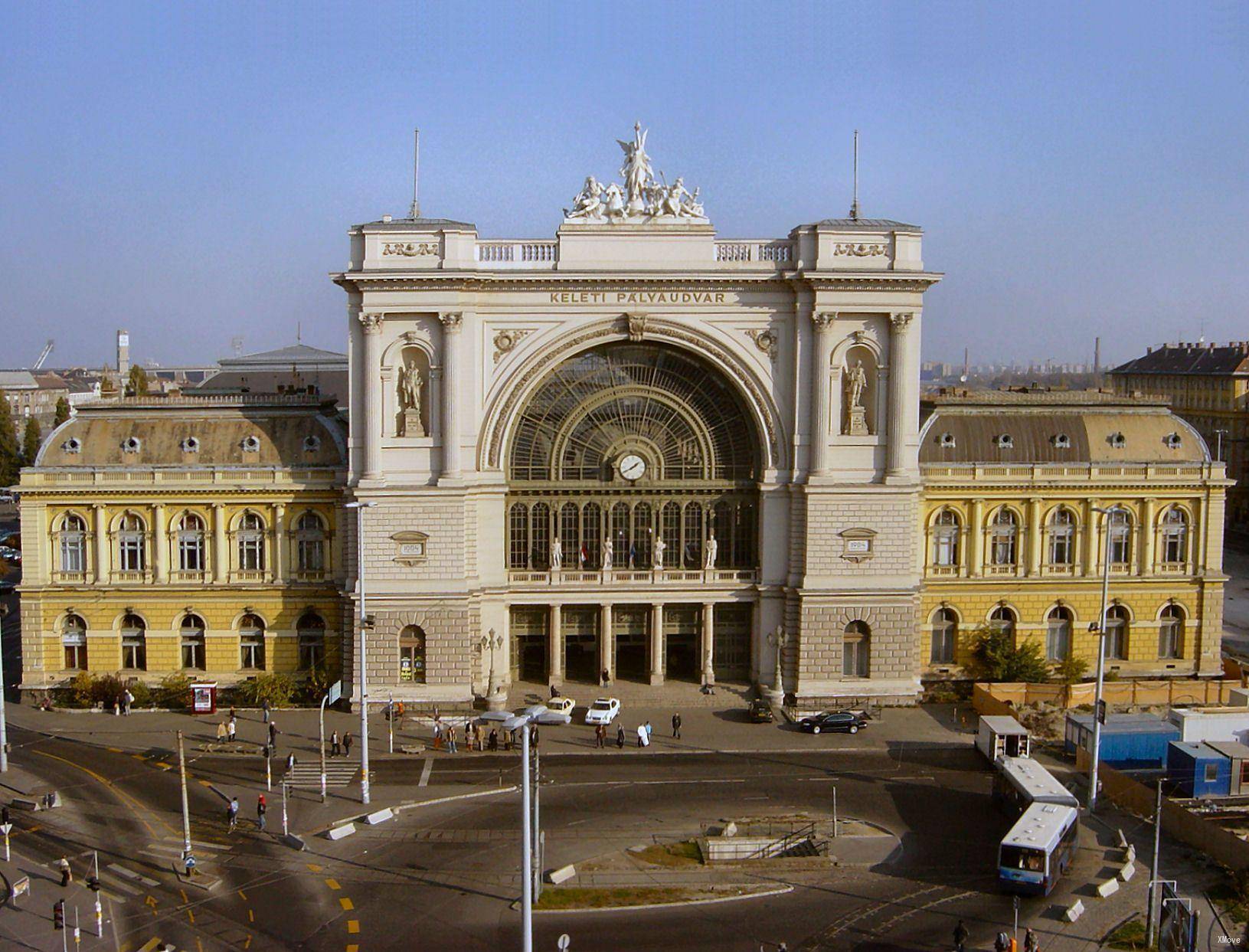Basel Sbb to Budapest: Trains, Buses, Fares, Today's Connections, Routes, Duration, Types of Trains, Station Guides, Tips, Journey
Switzerland Train Tickets
Scan QR code, download G2Rail App to see Basel Sbb's more live update, station guide, plan and photos



Train schedule Basel Sbb to Budapest
Popular train routes departing from Basel Sbb
* Luxembourg
* Bayeux
* Penzberg
* Oppenheim
* Bern Hbf
* Pforzheim Central(Pforzheim Hbf)
* Warszawa Central Station(Warszawa Centralna)
Popular train routes arriving in Basel Sbb
* Chur
* Interlaken West
* Marseille Saint Charles
* Aarhus
* Chiasso
* Genève Gare Cornavin
* Amsterdam Centraal
Popular train routes departing from Budapest
* Ljubljana
* Zürich Hb
* Split
* Florence(Firenze)
* Paderborn Central(Paderborn Hbf)
* Kolin(Cz)(Kolín)
* Parndorf Bhf Central(Parndorf Bhf (Main))
Popular train routes arriving in Budapest
* Nijmegen
* Zadar
* Bratislava Hlavná Stanica(Bratislava Hl.St.)
* Prague Central(Praha Hlavní Nádraží (Prag Hl. N.))
* Kiev
* Zagreb
* Sofia

Basel Sbb
Although it is a lot of space, it is relatively easy to use. It is very convenient to get to the train station from the station exit. This is a two-part train station: 1. Main SBB (Switzerland) station 2. SNCF station - now mainly transported by TER train to France, including trains to Strasbourg.
The main Station
Trains departure from the station SBB (Switzerland) include: 1. All trains to other cities in Switzerland 2. ICE and EC trains to Germany 3. EC trains to Italy 4. Night trains 5. Go to Paris The Lyria train at this SBB station,
Platform/track/gleis 1-4 is the street hall. The platform/track/ gleis 5-17 can be accessed via a large flyover with shops and cafes. Although the SBB station is not a terminal, there is no pressure on the transfer. It's not good. SBB also has an information desk on the flyover - so if you use this bridge to change trains and want to double check the details of your round trip, you don't have to go to the main lobby.
SNCF Station: G1:30-35:
On the right side of the main hall, when you enter the station from the city side (the location of the tram stop) - is a passage that can accommodate quality food stores and special take-out counters. (If you want to travel long distances, buy some food from here, it will be better than any food you find on the train). This passage is also the connection to the SNCF part of the station - from where the TER and the local trains on the route to Mulhouse and Strasbourg leave. Please note that the Lyria trains to Dijon and Paris do not leave here, they depart from the main SBB station.
The SNCF platform / gleis / track 30-35 are at the street level - and this part of the station has a separate role. You have to go through a sliding door and enter the train under the sign "France" - then you will pass through the pretty SNCF departure hall.
When taking the train from this SNCF part of the train station, you must remember to print your ticket on the machine at the platform/fire entrance. The current plan for construction work at the SBB station is about to be extended to the SNCF station - so it is hoped that its special features will be preserved.
Basel Bad bf Station
Basel is a city with two main stations, so it is very easy to take the train to the city. In addition to Basel SBB, the Basel Bad Bf station also provides services. If you take the train between Basel city centre and the German destination, it is more convenient to use the Basel Bad Bf station than to take the train to Basel SBB.
Basel Sbb - Station Guide | Departures and Arrivals | Popular Routes
Basel ( BAH-zəl, German: [ˈbaːzl̩] ) or Basle ( BAHL; French: Bâle [bɑl]; Italian: Basilea [baziˈlɛːa]; Romansh: Basilea [baziˈleːa] ) is a city in northwestern Switzerland on the river Rhine. Basel is Switzerland's third-most-populous city (after Zürich and Geneva) with about 180,000 inhabitants.Located where the Swiss, French and German borders meet, Basel also has suburbs in France and Germany. As of 2016, the Swiss Basel agglomeration was the third-largest in Switzerland, with a population of 541,000 in 74 municipalities in Switzerland (municipal count as of 2018). The initiative Trinational Eurodistrict Basel (TEB) of 62 suburban communes including municipalities in neighboring countries, counted 829,000 inhabitants in 2007.The official language of Basel is (the Swiss variety of Standard) German, but the main spoken language is the local Basel German dialect. The city is known for its many internationally renowned museums, ranging from the Kunstmuseum, the first collection of art accessible to the public in Europe (1661) and the largest museum of art in the whole of Switzerland, to the Fondation Beyeler (located in Riehen). The University of Basel, Switzerland's oldest university (founded in 1460), and the city's centuries-long commitment to humanism, have made Basel a safe haven at times of political unrest in other parts of Europe for such notable people as Erasmus of Rotterdam, the Holbein family, Friedrich Nietzsche and in the 20th century also Hermann Hesse and Karl Jaspers. The city of Basel is Switzerland's second-largest economic centre after the city of Zürich and has the highest GDP per capita in the country, ahead of the cantons of Zug and Geneva. In terms of value, over 94% of Basel City's goods exports are in the chemical and pharmaceutical sectors. With production facilities located in the neighboring Schweizerhalle, Basel accounts for 20% of Swiss exports and generates one third of the national product.Basel has been the seat of a Prince-Bishopric since the 11th century, and joined the Swiss Confederacy in 1501. The city has been a commercial hub and an important cultural centre since the Renaissance, and has emerged as a centre for the chemical and pharmaceutical industries in the 20th century. In 1897, Basel was chosen by Theodor Herzl as the location for the first World Zionist Congress, and altogether the congress has been held there ten times over a time span of 50 years, more than in any other location. The city is also home to the world headquarters of the Bank for International Settlements. In 2019 Basel, was ranked among the ten most liveable cities in the world by Mercer together with Zürich and Geneva.
Basel - Guide, Attractions, Tours, Sightseeings | Train from/to Basel | Popular RoutesBudapest (, Hungarian pronunciation: [ˈbudɒpɛʃt]) is the capital and the most populous city of Hungary, and the tenth-largest city in the European Union by population within city limits. The city has an estimated population of 1,752,286 over a land area of about 525 square kilometres (203 square miles). Budapest is both a city and county, and forms the centre of the Budapest metropolitan area, which has an area of 7,626 square kilometres (2,944 square miles) and a population of 3,303,786, comprising 33% of the population of Hungary.The history of Budapest began when an early Celtic settlement transformed into the Roman town of Aquincum, the capital of Lower Pannonia. The Hungarians arrived in the territory in the late 9th century. The area was pillaged by the Mongols in 1241. Buda, the settlements on the west bank of the river, became one of the centres of Renaissance humanist culture by the 15th century. The Battle of Mohács, in 1526, was followed by nearly 150 years of Ottoman rule. After the reconquest of Buda in 1686, the region entered a new age of prosperity. Pest-Buda became a global city with the unification of Buda, Óbuda, and Pest on 17 November 1873, with the name 'Budapest' given to the new capital. Budapest also became the co-capital of the Austro-Hungarian Empire, a great power that dissolved in 1918, following World War I. The city was the focal point of the Hungarian Revolution of 1848, the Battle of Budapest in 1945, and the Hungarian Revolution of 1956.Budapest is an Alpha − global city with strengths in commerce, finance, media, art, fashion, research, technology, education, and entertainment. It is Hungary's financial centre and was ranked as the second fastest-developing urban economy in Europe. Budapest is the headquarters of the European Institute of Innovation and Technology, the European Police College and the first foreign office of the China Investment Promotion Agency. Over 40 colleges and universities are located in Budapest, including the Eötvös Loránd University, the Semmelweis University and the Budapest University of Technology and Economics. Opened in 1896, the city's subway system, the Budapest Metro, serves 1.27 million, while the Budapest Tram Network serves 1.08 million passengers daily.Among Budapest's important museums and cultural institutions is the Museum of Fine Arts. Further famous cultural institutions are the Hungarian National Museum, House of Terror, Franz Liszt Academy of Music, Hungarian State Opera House and National Széchényi Library. The central area of the city along the Danube River is classified as a UNESCO World Heritage Site and has several notable monuments, including the Hungarian Parliament, Buda Castle, Fisherman's Bastion, Gresham Palace, Széchenyi Chain Bridge, Matthias Church and the Liberty Statue. Other famous landmarks include Andrássy Avenue, St. Stephen's Basilica, Heroes' Square, the Great Market Hall, the Nyugati Railway Station built by the Eiffel Company of Paris in 1877 and the second-oldest metro line in the world, the Millennium Underground Railway. The city also has around 80 geothermal springs, the largest thermal water cave system, second largest synagogue, and third largest Parliament building in the world. Budapest attracts 4.4 million international tourists per year, making it a popular destination in Europe.
Budapest - Guide, Attractions, Tours, Sightseeings | Train from/to Budapest | Popular Routes
Switzerland Train Tickets
Scan QR code, download G2Rail App to see Basel Sbb's more live update, station guide, plan and photos



Hot Journeys
* Bremen(Bremen) -> Freiburg Im Breisgau
* Venice(Venezia) -> Rome(Roma)
* Frankfurt -> Cologne(Köln)
* Basel(Basel) -> Paris
* Helsinki(Helsinki) -> Rovaniemi(Rovaniemi)
* Stuttgart -> Frankfurt
* Swiss Alps Jungfrau Aletsch -> Lauterbrunnen
* Milan -> Florence
* Manarola -> La Spezia(La Spezia)
* Frankfurt -> Dusseldorf(Düsseldorf)
* Rome(Roma) -> Milan
* Avignon -> Paris
* Barcelona -> Madrid(Madrid)
* Tokyo(東京) -> Osaka(大阪)
* Milan -> Turin(Torino)
* Rome(Roma) -> Venice(Venezia)
* Lisbon(Lisboa) -> Porto(Porto)
* Arth -> Milan
* Paris -> Nice
* Busan(부산) -> Seoul(서울)
* Bratislava(Bratislava) -> Warsaw(Warszawa)
* Paris -> Venice(Venezia)
* Stuttgart -> Frankfurt Airport(Frankfurt Flughafen)
* Frankfurt Airport(Frankfurt Flughafen) -> Cologne(Köln)
* Rome(Roma) -> Milan
* Rome(Roma) -> Naples
* Strasbourg -> Paris

